Do you have a question about the MSI X370 XPOWER GAMING TITANIUM and is the answer not in the manual?
Diagram of the motherboard and its components.
Includes software for drivers and utilities.
The manual itself.
Protects rear I/O ports.
Labels for SATA cables.
Cables for SATA drives.
Connects multiple GPUs.
Cable for LED lighting.
Instructions to prevent damage from static electricity.
How to handle sensitive components safely.
Guidelines for power connections and environmental factors.
What to do if the motherboard is damaged or not working.
Lists essential tools and components for assembly.
Step-by-step guide to install the CPU.
Visual guide for installing RAM modules.
Guide to connecting front panel connectors to the motherboard.
Steps to mount the motherboard inside the PC case.
How to install SATA optical and hard drives.
Visual steps for installing a graphics card.
Shows how to connect external devices to the rear I/O.
Details on connecting ATX, CPU, and PCIe power cables.
Steps to power on the system for the first time.
Details on CPU support and chipset.
Memory slot details and supported DDR4 speeds.
PCIe slot configurations.
Supported display outputs and resolutions.
SLI and CrossFire support.
SATA, M.2, and U.2 storage interface details.
Supported RAID levels for SATA devices.
USB port types and controller details.
Audio codec and features.
Network controller details.
List of rear I/O ports.
Power, USB, fan, and header connectors.
Power, Reset, OC Genie, BIOS Flash buttons.
Clear CMOS jumper.
Diagnostic LED.
Super I/O controller chip.
Monitoring capabilities.
Physical dimensions.
BIOS chip size and features.
List of included software utilities.
Key motherboard features.
Diagram showing CPU connectivity to components.
Diagram showing X370 chipset connections.
Diagram showing external interfaces.
Labeled diagram of the rear I/O ports.
Explains LAN port LED indicators.
Shows audio port connections.
Function of Clear CMOS and BIOS Flashback+.
Interface and functions of the audio manager software.
Visuals for connecting audio devices.
Diagram labeling key motherboard connectors and slots.
Table listing components, types, and page references.
Details on the AM4 CPU socket and installation.
Crucial advice for CPU installation and overclocking.
Information on RAM slots and installation.
Guidance on optimal RAM installation.
Advice on memory compatibility and frequency.
Details on PCIe slot configurations and lanes.
Guidance for multi-GPU setups.
Tips for installing graphics cards and expansion cards.
Shows PCIe lane allocation for RYZEN/Athlon.
Explains lane sharing and priority.
Step-by-step guide for SLI setup.
Controls CPU overclocking stages.
Instructions for using the Game Boost knob.
Jumper for extreme overclocking.
Warnings for using slow mode.
Details on M.2 slot installation.
Step-by-step guide for M.2 SSD installation.
How to use the M.2 heat dissipation shield.
Advice on using the M.2 shield.
Explains the U.2 interface for NVMe storage.
Steps to connect a U.2 SSD.
Warning about M2_1 slot availability.
Information on SATA connectors.
Tips for connecting SATA cables.
Table showing device compatibility.
Visuals of M.2, SATA, U.2, PCIe device combinations.
Details on ATX, CPU, and PCIe power connectors.
Ensuring secure power cable connections.
Connecting USB 2.0 ports to the front panel.
Correct pin connection for USB 2.0.
Connecting USB 3.1 Gen2 Type-C to the front panel.
Connecting USB 3.1 Gen1 ports to the front panel.
Correct pin connection for USB 3.1 Gen1.
Functionality of the USB charger port.
Guide to smartphone charging via USB.
Details on PWM and DC fan connectors.
How to change fan mode in BIOS.
Ensuring fan functionality after mode change.
Pinouts for fan connectors.
Connecting front panel audio jacks.
Connecting chassis intrusion switch.
How to enable chassis intrusion detection.
How to clear intrusion warnings.
Connectors for front panel switches and LEDs.
Connector for Trusted Platform Module.
Jumper to reset BIOS settings.
Steps to clear CMOS.
Button for BIOS flashing without CPU/RAM.
Function of power and reset buttons.
Connector for RGB LED strips.
LED strip compatibility and usage.
Guide for installing RGB LED strips.
Indicates memory installation status.
Indicates if GPU is detected.
Indicates BIOS flashing progress.
Shows PCIe slot mode (x16, x8, x4, x1).
Indicates fan control mode (PWM/DC).
Displays motherboard debug status (CPU, DRAM, VGA, BOOT).
Indicates Game Boost control source (HW/SW).
Displays POST progress and error codes.
Maps hex codes to characters.
Explains POST stages.
Detailed table of SEC, PEI, DXE codes.
Advice on BIOS updates and versions.
How to access BIOS setup.
List of BIOS setup function keys.
Methods to reset BIOS settings.
Safety warning for clearing CMOS.
Procedures for updating BIOS.
Using MSI M-FLASH for BIOS updates.
Using MSI Live Update 6 for BIOS updates.
Using BIOS FLASHBACK+ for updates.
USB format requirement for FLASHBACK+.
Basic BIOS interface and options.
Warnings about OC menu and defaults.
Explains info display and function buttons in EZ Mode.
Warnings about RAID drivers and M.2 SSD.
How to use the Favorites menu.
Advanced BIOS interface and options.
Overview of main BIOS menus (SETTINGS, OC, etc.).
Configuration options for system and peripherals.
Viewing system date, time, and SATA info.
Detailed system information.
System hardware details.
Advanced PCI subsystem settings.
PCI interface latency settings.
ACPI parameters for power LEDs.
Settings for onboard peripherals (LAN, audio, USB).
Enable/disable onboard LAN.
Control LAN boot option ROM.
UEFI network stack settings.
Enable IPv4 PXE boot.
Enable IPv6 PXE boot.
Setting SATA controller mode (AHCI/RAID).
Enable/disable SATA hot plug.
Enable/disable onboard audio.
Enable/disable High Precision Event Timers.
Settings for onboard graphics.
USB controller and device settings.
XHCI hand-off support.
Legacy USB support.
System power management settings.
System power consumption settings.
Behavior on AC power loss.
Protection against abnormal voltage.
Windows specific settings.
Support for Windows 10 WHQL.
Graphics Output Protocol settings.
Windows secure boot settings.
System wake up configurations.
Detailed wake up event options.
Wake up via RTC alarm.
Wake up via PCIe devices.
Wake up via USB devices.
Wake up via PS/2 mouse.
Wake up via PS/2 keyboard.
Setting hot keys for wake up.
System boot device sequence settings.
Control boot logo display.
Set NumLock state on boot.
Control help information display.
Automatic CMOS clearing.
Select boot mode (Legacy/UEFI).
Set boot device priority.
BIOS security settings.
Set administrator password.
Set user password.
Configure password prompts.
Enable/disable password clearing.
Advice on setting/clearing passwords.
TPM settings.
Enable/disable TPM for system access.
Select TPM device.
Set TPM device version.
Chassis intrusion detection settings.
Enable/disable chassis intrusion recording.
Options for saving changes and exiting BIOS.
Exit without saving.
Save changes and restart.
Save current changes.
Restore previous values.
Load default settings.
Select boot device.
Overclocking settings and options.
Warnings about overclocking.
Select normal or expert OC settings.
Set CPU frequency.
Enable/disable CPB.
Set number of active CPU cores.
Control Game Boost via button.
Set DRAM frequency.
Shows adjusted DRAM frequency.
Memory timing settings.
Digital power controls for CPU PWM.
CPU loadline calibration settings.
CPU over-voltage protection limit.
CPU under-voltage protection limit.
CPU over-current protection limit.
CPU PWM switching frequency.
CPU VRM over-temp protection.
CPU VRM phase control method.
CPU-NB loadline calibration.
CPU-NB over-current protection limit.
CPU-NB PWM switching frequency.
CPU-NB VRM control method.
Expands VR over-current protection.
Controls DRAM PWM phase.
DRAM over-voltage protection limit.
DRAM under-voltage protection limit.
DRAM over-current protection limit.
DRAM switching frequency.
DRAM VRM over-temperature protection.
Settings for CPU voltages.
Settings for memory voltages.
Warning for CPU/memory changes.
Displays installed CPU information.
Shows key CPU features.
Displays memory settings and timings.
Displays installed memory SPD info.
CPU specific features.
CPU speed and power management.
Enable/disable AMD SVM mode.
Enable/disable C6 state.
Utility to update BIOS via USB flash drive.
Manage overclocking profiles.
Save, load, and clear profiles.
Load profile from BIOS ROM.
Save profile to USB.
Load profile from USB.
Monitor system voltages, temps, and fan speeds.
Displays system temperatures and fan speeds.
Controls fan operation modes (PWM, DC, Auto).
Fan speed control options.
Shows system voltages.
Steps to install Windows OS.
Steps to install system drivers.
Steps to install software utilities.
Software for downloading drivers and updates.
Explains Live Update, History, Setting, System Info tabs.
How to update system using Live Update 6.
Detailed steps for using Live Update 6.
Feature for simplified application installation.
Software for system adjustment and monitoring.
Controls for loading/saving profiles.
Settings reset to default on shutdown.
Adjust CPU ratio and base clock.
Controls CPU fan speed (Smart/Manual).
Controls CPU voltage.
Adjust DRAM frequency and voltage.
Adjust IGP and GT settings.
Overclocking stages via software interface.
Access to voltage, fan, sensor controls.
Access to record, warning, mobile control.
Setting thresholds for system warnings.
Remote control via mobile app.
System monitoring gadget feature.
Software for gaming performance tuning.
Configure Gaming App startup.
OC, Gaming, Silent modes.
LED Effect, OSD, Eye Rest, Dragon Eye.
Gaming Hotkey, Mouse Master, VR Ready.
Setup for mobile remote control.
Control motherboard LED lighting.
Configure on-screen display information.
Optimize display settings.
Optimize system for VR.
Define hotkeys for system control.
Switch between hotkey categories.
Create keyboard/mouse macros.
Define hotkeys for Windows shortcuts.
Hotkey login function.
Define hotkeys for MSI Smart Keys.
Mouse macro and DPI adjustment.
Create a virtual RAM drive.
Steps to create and configure RAMDISK.
Select system performance modes.
Easy mode for performance selection.
Enable/disable X-BOOST on startup.
Advance mode for USB/Storage boost.
Tool for creating Windows USB installers.
Guide to creating Win7 USB installer.
Utility to create SUPER RAID.
Utility for network traffic shaping.
How to configure internet speed.
Steps to test network speed.
Application for in-game video overlay.
Enable/disable Dragon Eye.
Select and add videos.
Adjust video overlay size.
Adjust video overlay position.
Adjust video overlay transparency.
Information on Dragon Eye hotkeys.
Audio enhancement software.
Access audio effects and profiles.
Access microphone effects and settings.
EQ profiles and custom EQ settings.
Features for audio recording and launchpad.
Visual sound localization feature.
Software for gameplay recording and streaming.
User login dialogue.
Steps to create an XSplit account.
How to stream and record gameplay.
Features within the game overlay.
Connect social media and streaming services.
Configure stream and record settings.
Select microphone device.
Select camera device.
Configure Be-Right-Back graphics.
Manage recorded videos.
Unified platform for SteelSeries devices.
Access and manage SteelSeries devices.
Set up auto-launch configurations.
Deploy configurations per application.
Device-specific configuration settings.
Customizing device settings.
Customize device aspects.
Toggle widgets.
Toggle configuration windows.
Preview configuration changes.
Save or revert configuration changes.
Utility to gather system information.
CPU details.
Cache information.
Motherboard details.
Memory details.
Memory module SPD info.
GPU details.
CPU benchmark/stress test.
CPU-Z version and system info.
Steps to resolve power issues.
Steps for no display issues.
Troubleshooting BIOS update failures.
How to recover from lost BIOS password.
Troubleshooting audio problems.
Troubleshooting network connectivity.
Troubleshooting USB device issues.
FCC compliance information.
CE conformity declaration.
C-Tick compliance information.
Battery disposal and handling.
Compliance with chemical substance regulations.
Waste Electrical and Electronic Equipment statement.
MSI's environmental policy.
Compliance with India RoHS rules.
Compliance with Vietnam RoHS rules.
Copyright information.
Resources for technical assistance.
Acknowledgement of product names.
| Brand | MSI |
|---|---|
| Model | X370 XPOWER GAMING TITANIUM |
| Category | Motherboard |
| Language | English |
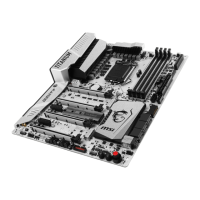
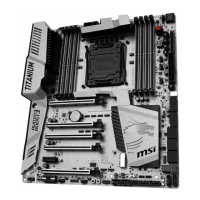
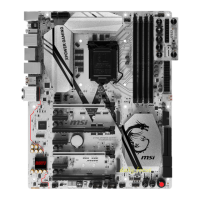
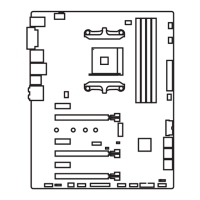
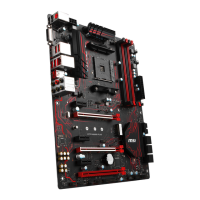
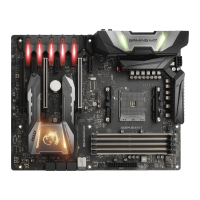
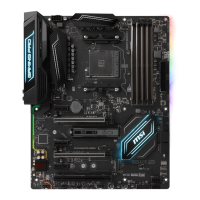
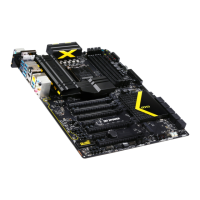
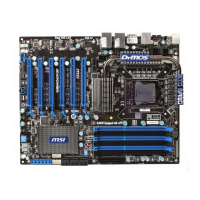
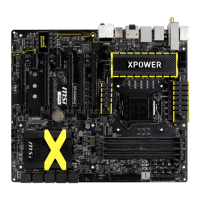
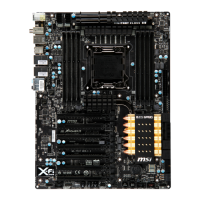

